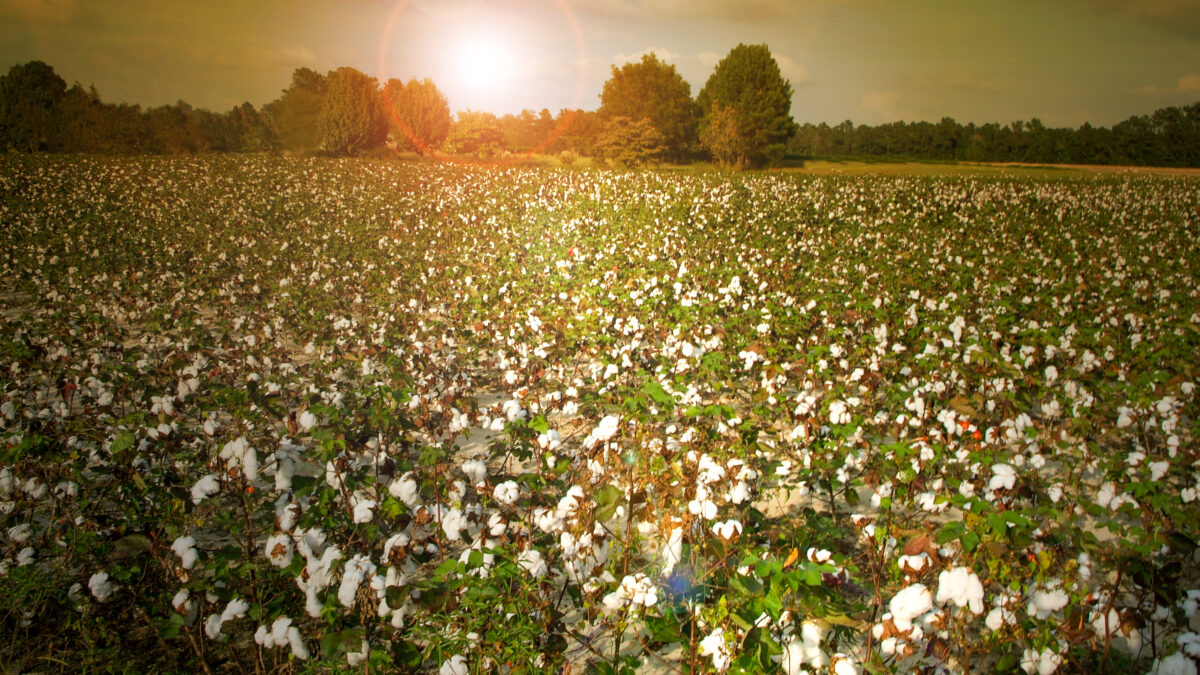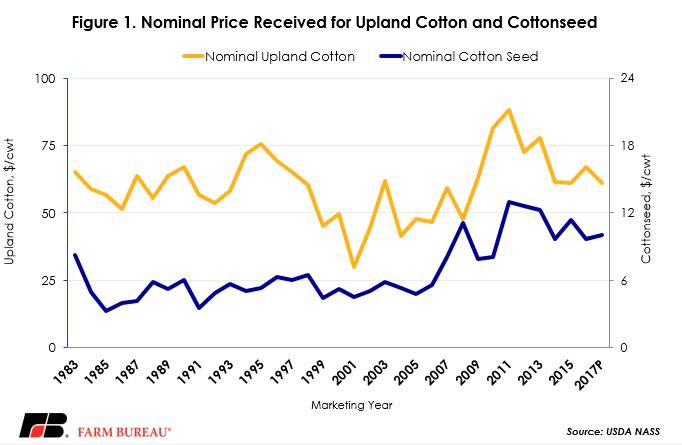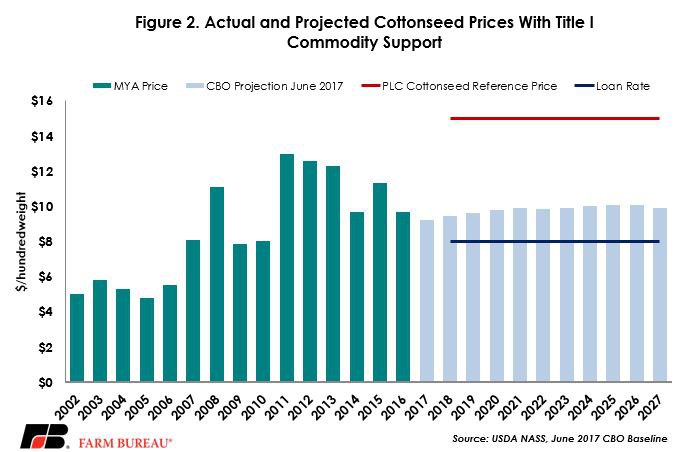Cotton Coming Back in Title I?

photo credit: North Carolina Farm Bureau, Used with Permission
John Newton, Ph.D.
Former AFBF Economist
In response to a Brazil-initiated 2009 World Trade Organization ruling against the United States, cotton was removed as a covered commodity in Title I of the 2014 Farm Bill. This made it ineligible for the Agricultural Risk Coverage or Price Loss Coverage programs. Cotton remained eligible for the marketing assistance loan program, but the primary safety net was the Stacked Income Protection Plan crop insurance policy. STAX is a county-based revenue protection policy that supplements existing cotton crop insurance policies. However, STAX was plagued by adoption rates that only averaged 26 percent and substantially underperformed relative to producer expectations.
In recent years, and in the face of lower cotton prices, there have been several attempts to improve the cotton safety net. These have included cost-sharing programs for ginning and unsuccessful attempts at making cottonseed eligible for Title I commodity support programs – until now.
This article reviews the recent Senate fiscal year 2018 agricultural appropriations provisions that improve the cotton safety net and would make cottonseed eligible as a Title I covered commodity for participation in PLC beginning with the 2018 crop year. The Senate appropriations bill also included proposed adjustments to the dairy Margin Protection Program which are discussed in a separate article.
The Cottonseed Proposal
The changes proposed for the cotton industry include:
- Cottonseed would be a covered commodity and eligible for ARC or PLC
- The reference price for cottonseed would be $15 per hundredweight
- The loan rate for cottonseed would be $8 per hundredweight
- The payment yield for a farm for cottonseed shall be equal to 1.4 times the payment yield for upland cotton
- For some farms with generic base, former cotton base, those acres shall be reallocated equal to the greater of: 1) 80 percent of the generic base on the farm with 20 percent of unassigned base ineligible for program payments; 2) the average number of cottonseed acres planted or prevent planted for the 2009 to 2012 crop years, but not to exceed total generic base; or 3) to base acres for other covered commodities including cottonseed.
- Effective with the 2018 crop year, a farm shall not be eligible for STAX for a crop year for which the cottonseed crop is covered under ARC or PLC.
Importantly, the ability to participate in this Title I program would provide risk management support to cotton farmers as they work through the prolonged period of low prices and depressed market conditions experienced since 2011, Figure 1.

Title I Safety Net Support
ARC uses an Olympic moving average price to determine the benchmark revenue guarantee for a covered commodity. The Olympic moving average takes the last five years of data and drops the highest and the lowest values, effectively averaging the “middle” three years. In the case of cottonseed, beginning with the 2018 crop year, and using the Congressional Budget Office’s June 2017 Baseline for Farm Programs price projections, the Olympic moving average cottonseed price would be $10.25 per hundredweight – well below the proposed PLC reference price of $15 per hundredweight. Given this price relationship, it is likely a majority of cottonseed base acreage would enroll in PLC due to the higher level of safety net protection provided.
PLC is designed to make payments to producers when the national marketing year average crop price falls below an effective price. The effective price under PLC is the maximum of the loan rate or the reference price. In the example of cottonseed, the maximum program payment would be $7 per hundredweight, $7 = $15 – $8. Any marketing year average prices above the loan rate would reduce the PLC payment rate.
The June 2017 CBO agricultural baseline projects cottonseed prices will average $9.90 per hundredweight over the next decade. For perspective, however, over the previous decade, cottonseed prices have reached a high of $13 per hundredweight and averaged just over $10 per hundredweight. Thus, given this price uncertainty, PLC payment rates for cottonseed are likely to vary substantially over the next decade. However, based on the CBO projections, an average payment of $5.10 could be anticipated over the next decade, $5.10 = $15 - $9.90, Figure 2.
The total payment per operator would then depend on the farm’s decision on generic base acres, e.g. convert 80 percent of the generic base to cottonseed base, and on the farm’s assigned payment yield. The Senate proposal does provide a one-time opportunity to update the payment yield.

Summary
USDA’s World Agricultural Supply and Demand Estimates projected that cotton prices will decline by nearly 10 percent in 2017 to $0.61 per pound, and will be down 30 percent since the high price of 2011. It’s clear that the Senate proposal would address this downturn in prices impacting cotton producers. It is also an important first step in recognizing the need to provide an adequate safety net for cotton producers in Title I via the next farm bill.
The magnitude of support for cotton producers remains uncertain. PLC makes payments on 85 percent of a farm’s base acres and on 90 percent of a farm’s program yield. Under the cottonseed proposal, the program yield would be increased by 140 percent above the cotton program yield, but the generic base acre reallocation is highly uncertain. How many farmers opt out of STAX is also uncertain. With 17 million acres of generic base and low STAX adoption rates, how many of these acres ultimately convert to cottonseed base, and how many producers continue to purchase STAX, are the million-dollar questions.
Trending Topics
VIEW ALL